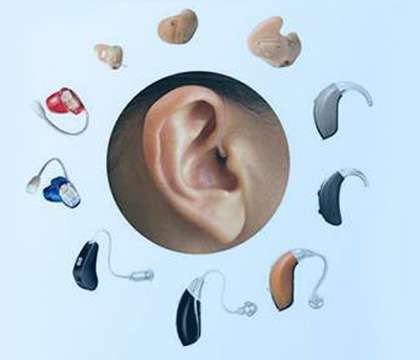Hearing Aids
Hearing aids are small battery-powered electronic devices designed to improve your hearing. Typically, you wear these devices inside or behind your ear, they make some sounds louder. Analog hearing aids convert sound waves into electrical signals and amplify all sounds to make them louder. They’re usually the least expensive and have simple volume controls.
Digital Hearing Aids
Digital Hearing Aids used digitized sound processing (DSP) to convert sound waves into binary codes similar to computer codes, then amplify them. The code includes information about the direction of a sound, loudness and its pitch. That makes it easier for you to adjust the sound to whatever you need, whether you’re in a restaurant, a quiet room, or a stadium. Most of them will adjust automatically. Although digital hearing aids cost more than analog hearing aids, the results are far better and are smaller in size and also more powerful.
There are three main styles of hearing aids. They differ in size, placement inside or outside the ear, and how well they make sound louder:

Canal Hearing Aids
Canal hearing aids fit inside your ear, harder to see and are available in different styles. In-the-canal (ITC) hearing aids fit as per the size and shape of your ear canal.
Completely-in-canal (CIC) aids are smaller and nearly hidden in your ears. Either type can be used for mild to moderately severe hearing loss. But because they are smaller in size, it can be harder for a person to adjust and remove. These type of hearing aids are usually not recommended for children or adults who might have problems with very small devices.
Invisible-in-canal (IIC) aids rest in the second bend of your ear canal and is nearly impossible for others to see. You may put it in every day, or you may wear the device for several months at a time. They are a great choice these days, as they won’t get pulled off or tangled when wearing or removing face masks.
In-The-Ear (ITE)
In-the-ear (ITE) hearing aid is a hard plastic casing that holds the electronic components in place and fits completely inside your outer ear. They are best suitable for people with mild to severe hearing loss, but they don’t work well for children because the casings need to be replaced often as their ears are still growing.
Behind-the-ear (BTE)
Behind-the-ear (BTE) hearing aid is a hard plastic casing that fits behind your ear and connected to a plastic earmold that fits inside the outer ear. The electronic components are held in the casing behind your ear. Sound from the hearing aid travels along the plastic earmold and into your ear. This type of hearing aids is used by people of all ages for mild to profound hearing loss.